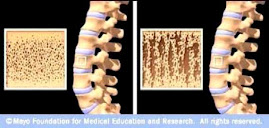The revolution Dr. Eric Topal describes, and which is the
grand theme of this book, is the inevitable move from population-based medicine to that
of the science and health of the individual.
Doctors, and the medical education system that produces them, are out of touch,
conservative and slow to change. Today’s evidence-based medicine tends to
be based on studies of populations rather than on individuals. A population-based
study of a drug which claims to reduce the risk of myocardial infarction (MI)
by 36%, for example, sounds much less impressive to a patient when he realizes
that 100 individuals will need to take the drug in order to prevent one
MI. He also criticizes the use of surrogate end points in studies (e.g., cholesterol/LDL)
and the development of expert-based guidelines around these and puts mass
population screening tests like PSA under the microscope. He introduces the
idea that it is now possible, using pharmacogenomic studies, to perform real
evidence-based studies based on individuals rather than populations. He
predicts that because many of the changes he describes will be resisted by
doctors and others within the health sciences, that patients/consumers are
likely to lead this revolution.




No comments:
Post a Comment